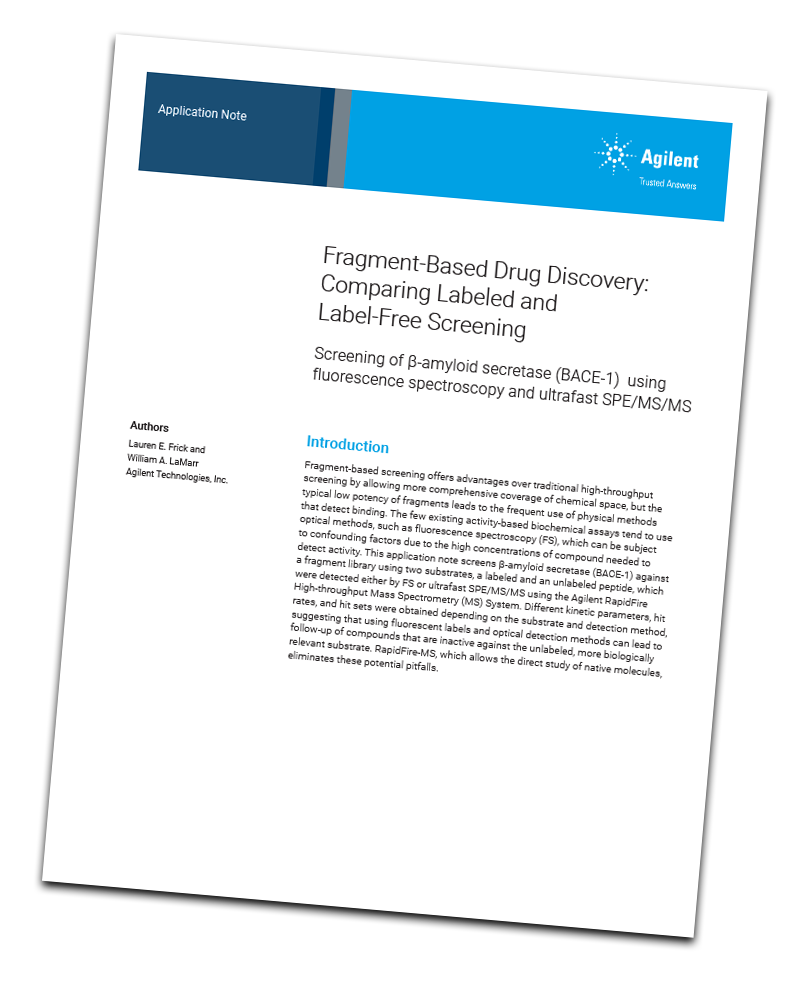This application note describes screening of β-amyloid secretase (BACE-1) using fluorescence spectroscopy and ultrafast SPE/MS/MS.
 Introduction
Introduction
Fragment-based screening offers advantages over traditional high-throughput screening by allowing more comprehensive coverage of chemical space, but the typical low potency of fragments leads to the frequent use of physical methods that detect binding. The few existing activity-based biochemical assays tend to use optical methods, such as fluorescence spectroscopy (FS), which can be subject to confounding factors due to the high concentrations of compound needed to detect activity. This application note screens β-amyloid secretase (BACE-1) against a fragment library using two substrates, a labeled and an unlabeled peptide, which were detected either by FS or ultrafast SPE/MS/MS using the Agilent RapidFire High-throughput Mass Spectrometry (MS) System. Different kinetic parameters, hit rates, and hit sets were obtained depending on the substrate and detection method, suggesting that using fluorescent labels and optical detection methods can lead to follow-up of compounds that are inactive against the unlabeled, more biologically relevant substrate. RapidFire-MS, which allows the direct study of native molecules, eliminates these potential pitfalls.
Experimental
Experimental conditions can be found by downloading the full application note.
Results and Discussion
The results and discussion investigates:
- assay development
- fragment library screening
- hits observed by MS only
- hits observed with the unlabeled peptide only
- hits observed with the labeled peptide only.
Conclusion
Robust functional biochemical assays were developed for both a labeled and an unlabeled substrate of the BACE-1 enzyme, with data collection by both MS and FS. Using these assays to screen a fragment library against the labeled and unlabeled substrates using both detection methods produced three disparate hit sets and hit rates. Follow-up of selected compounds demonstrated the existence of different hit classes among the assays. Interestingly, FS and MS produced different hit sets when used as complementary detection methods on the same samples. While some MS hits (including the most potent) were obscured by autofluorescence in the FS assay, this phenomenon alone did not fully account for the discrepancy between techniques. MS also generated different hit sets for the labeled and the unlabeled peptide, finding both hits that were active against the labeled peptide but not the unlabeled, and vice versa. The existence of these two populations of compounds underscores the importance of substrate selection when setting up a new screen.
